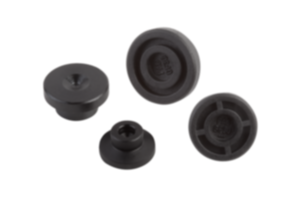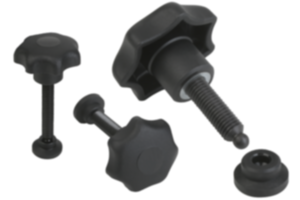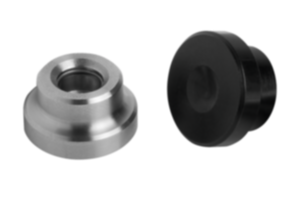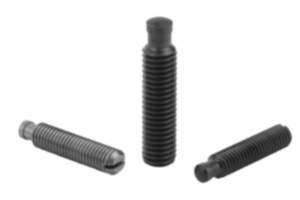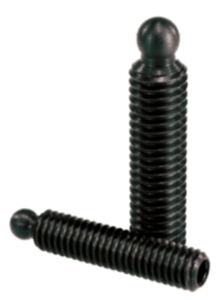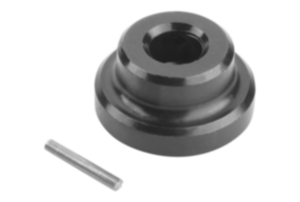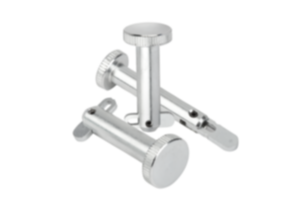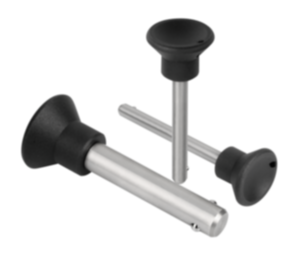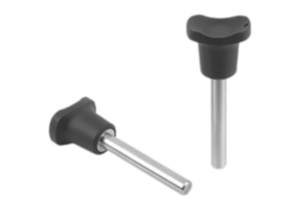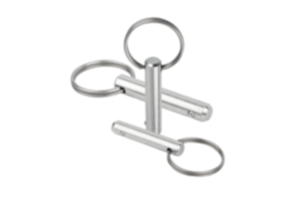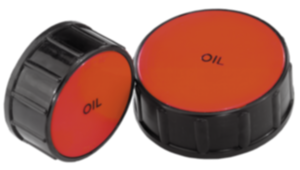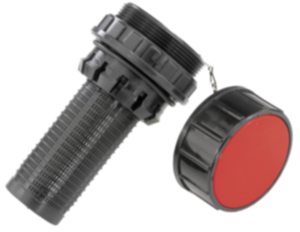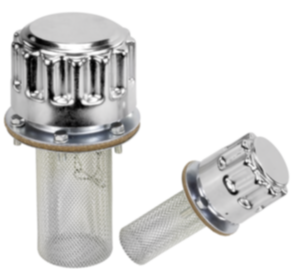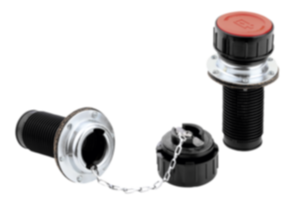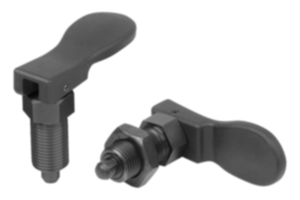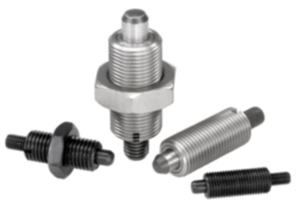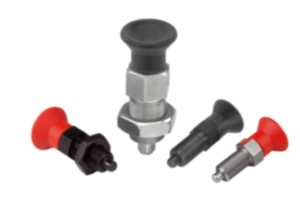Upínací excentry, excentrické upínače
Upínací excentry a excentrické upínače od firmy KIPP
Upínací excentry a excentrické upínače jsou dva nejčastější typy upínacích přípravků. Ovládací prvky se používají k bezpečnému upevnění obrobků při obrábění nebo montáži. Upínače nabízejí rychlý a efektivní způsob uchycení obrobků a umožňují snadné nastavení a upevnění. Používají se v široké paletě aplikací, včetně konstrukce strojů, dřevozpracujícího, kovozpracujícího a automobilového průmyslu.
Upínací zařízení se vyznačují snadnou manipulací, vysokou upínací silou a univerzálností. Nabízejí spolehlivé řešení pro zajištění obrobků různých tvarů a velikostí během obrábění.
V následujících kapitolách se blíže podíváme na funkce, výhody a použití upínacích excentrů a excentrických upínačů.
Co jsou upínací excentry?
Co jsou excentrické upínače?
Upínací přípravky od společnosti KIPP
Výhody upínacích excentrů a excentrických upínačů
Co jsou upínací excentry?
Upínací excentr je speciální typ upínacího přípravku, které se používá k bezpečnému a rychlému upevnění obrobků. Kompaktní konstrukce upínacího excentru umožňuje jeho použití ve stísněných prostorech a na malých obrobcích. Kromě toho umožňuje excentrický upínací mechanismus rychlé a snadné upnutí a uvolnění obrobků, což zvyšuje efektivitu výroby a montáže.
Upínací excentry se často používají v kovoobrábění, konstrukci strojů a výrobní technice. Nabízejí efektivní řešení pro upevnění obrobků při obrábění nebo montáži a jsou velmi oblíbené díky snadné manipulaci a robustnosti.
Díky své specifické konstrukci umožňují upínací excentry přesné a opakovatelné upínání, což je výhodné zejména v průmyslových odvětvích orientovaných na přesnost.
V sortimentu KIPP existují tři různé upínací excentry.
Upínací excentr je vyroben z vysoce kvalitní zušlechtěné oceli, která mu dodává vysokou pevnost a odolnost proti opotřebení. Zušlechtěná ocel je známá především svou dlouhou životností.
Povrch upínacího excentru je brynýrovaný, což zajišťuje určitý stupeň ochrany proti korozi a dále zvyšuje životnost.
Vytvořili jsme technický výkres, který jasně znázorňuje konstrukci a funkci upínacího excentru. Hlavní součásti zobrazené na výkresu jsou:
1 - ustavovací šroub
2 - nákružkové pouzdro
3 - upínací excentr
Pojistný šroub upevňuje upínací excentr a nákružkové pouzdro k základové desce. Pro montáž upínacího excentru zasuňte ustavovací šroub do pouzdra a upínacího excentru.
Nákružkové pouzdro drží upínací excentr a fixuje jeho polohu na základové desce.
Upínací excentr tvoří centrální ovládací prvek. Otáčením upínacího excentru pomocí otevřeného klíče působí na obrobek upínací silou a pevně jej upíná.
Co jsou excentrické upínače?
Excentrický upínač je mechanické zařízení, které se používá k bezpečnému a rychlému upevnění obrobků. Mechanismus je založen na excentrickém pohybu (mimo střed), který vytváří silnou upínací sílu.
Jednotlivé části excentrického upínače jsou:
- Excentrický mechanismus: Jedná se o ústřední součást excentrického upínače. Mechanismus se skládá z válcové části, jejíž osa otáčení se nekryje s geometrickou osou. Upínací síla vzniká otáčením excentru.
- Úchyt nebo páka: K excentrickému mechanismu je připojena páka, která usnadňuje utahování a uvolňování upínací síly. Excentrický pohyb se aktivuje posunutím páky.
- Základová deska nebo upevňovací prvek: Excentrické upínače jsou namontovány na upevňovacím prvku, který poskytuje stabilní základnu pro upínací přípravek.
Funkčnost excentrického upínače je zcela pochopitelná. Upínač pracuje díky excentrickému rotačnímu pohybu. Při pohybu páky se excentrický mechanismus otáčí a tlačí na obrobek, čímž vytváří silnou upínací sílu.
Excentrický upínač se středovým upínáním nebo koncovým upínáním
Při použití excentrických upínačů existují dva hlavní typy upínací techniky - střední upínání a koncové upínání.
Rozdíl mezi těmito dvěma technikami spočívá ve způsobu a místě působení upínací síly na obrobek.
U koncového upínání působí upínací síla na konci obrobku nebo na jeho okraji. To znamená, že upínací zařízení uchopí konce obrobku a tím se upevní. Koncová upínání často nabízejí vysoký stupeň stability, protože mohou upevnit obrobek ve dvou protilehlých bodech. Koncové upínání je vhodné zejména pro dlouhé a velké obrobky, které mají být obráběny na okrajích.
Tento typ upínání ponechává volnou kompletné délku obrobku, což umožňuje obrábění podél celého obrobku.
Naproti tomu při středovém upínání působí upínací síla ve středu obrobku nebo podél středové osy. Upínací přípravek se zde upíná uprostřed nebo ve střední části obrobku. Tento způsob je zvláště výhodný, pokud je třeba opracovat konce obrobku nebo pokud je zapotřebí rovnoměrná upínací síla podél celého obrobku. Středové upínání zajišťuje rovnoměrnější rozložení upínací síly, což vede ke stabilnější fixaci a minimalizuje riziko deformace, zejména u delších obrobků.
Společnost KIPP má ve svém sortimentu dva různé excentrické upínače, abyste byli připraveni na každou upínací techniku.
Kromě dalších excentrických upínačů pro excentrické upínací moduly z oceli nebo POM, nabízí společnost KIPP také další díly týkající se upínacích excentrů a excentrických upínačů.
Upínací přípravky od společnosti KIPP
Dalších 21 výrobků naleznete v kategorii „Upínací excentry, excentrické upínače“. Každý z nich lze použít resp. kombinovat se dvěma upínacími prvky.
Výrobky jako šrouby pro excentr a upínací excentr, jakož i excentrická páka nebo upínací plech slouží jako náhradní díly a lze je snadno vyměnit.
Kromě příslušenství nabízíme také další typy excentrů, např přítlačný upínač s excentrem, svěrací excentr z mosazi nebo upínací excentr s tvarovým stykem.
Výhody upínacích excentrů a excentrických upínačů
Upínací excentry a excentrické upínače jsou nepostradatelnými nástroji ve výrobním a montážním průmyslu. Nabízejí řadu výhod, které z nich činí preferovanou volbu pro fixaci obrobků. Upínací přípravky se vyznačují rychlou a snadnou manipulací, což výrazně zvyšuje efektivitu výroby. Uživatelsky přívětivý pákový mechanismus umožňuje rychlé upínání a uvolňování obrobků, což zkracuje dobu obrábění a zvyšuje produktivitu.
Další velkou výhodou je silná upínací síla, kterou vytváří excentrický mechanismus. Tím je zajištěno bezpečné a spolehlivé upevnění obrobků, což je důležité zejména pro přesné práce. Excentrické upínače zajišťují přesné a opakovatelné upínání, které je nezbytné pro konzistentní výsledky ve výrobě.
Upínací přípravky nabízejí také vysokou míru univerzálnosti. Lze je použít v široké paletě aplikací a průmyslových odvětví. To z nich činí cennou investici pro společnosti, které působí v různých oblastech a musí zpracovávat různé obrobky.
Proč byste měli nakupovat u nás? Naše upínací excentry a excentrické upínače jsou zárukou nejvyšší kvality a spolehlivosti. Nabízíme robustní a odolné výrobky, které splňují požadavky vašich výrobních procesů.
S našimi upínacími excentry a excentrickými upínači investujete do upínacích prvků, které optimalizují vaše výrobní procesy a zvyšují produktivitu.

